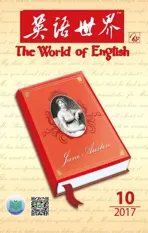Buddhas with Double Faces (I)
2018-01-04By
By
Buddhas with Double Faces (I)
ByWilliam Empson1
People tend to think of ‘a Buddha’as a standard object, to think of the heads as all alike and practically without expression. This is roughly true about the work of later periods in all countries which adopted Buddhism, but the earlier ones vary a great deal. I want in this article to describe an asymmetrical technique, a rule for making the two sides of the faces different, which I think was used in the Far East from about the fifth to the tenth centuries AD. However, before enlarging on the variety of these heads one should of course recognise that there is a Buddha type, in its way a rigid one, and that the different heads are keeping the rules.
[2] It is perhaps the simplest expression of high divinity that the human race has devised. In a way, Europe has agreed on the face of Christ, but you have to be a trained artist to draw it.The Lotus Sutra,written probably in the fi rst century AD,says that even boys in their play who draw the Blessed One with their fingernails are acquiring merit and becoming pitiful in heart. The boys would really be able to draw a Buddha with their fingernails;even the crudest use of the formula gives him his effect of eternity. It is done by the high eyebrow, soaring outwards; by the long slit eye, almost shut in meditation,which would be a frighteningly large eye if opened; and by a suggestion of the calm of childhood in the smooth lines of the mature face—a certain puppy quality in the long ear often helps to bring this out. If you get these they carry the main thought of the religion; for one thing the face is at once blind and all-seeing (‘He knows no more than a Buddha’ they say of a deceived husband in the Far East) so at once suf fi cient to itself and of universal charity.
[3] Representations of the Buddha himself seem to have been forbidden in India till the first century AD, and the earliest ones were probably made by foreign converts in Gandhara, part of the modern Afghanistan, along the trade route to Europe and China. These draw on Greek conventions for the face and drapery, but give the Buddha his distinctively Indian marks such as the spot between the brows(over the pineal gland; perhaps originally a caste-mark) and the cross-legged position with the soles of both feet lying upwards. He has already the nob on the top of his head, which may have been the formalisation of a hairdressing fashion,but is listed early as a sacred deformity.He has wavy but not tightly curled hair,and a half-closed eye, but the early examples have not got the high eyebrow.
[4] At almost the same date, statues of the Buddha appear at Mathura in India,drawing not on the Greek tradition but on an Indian tradition for local pagan deities (the fi rst statues of the main Hindu deities seem to have been made about the same time). These give him much more of the vigour of an evangelist; he has a wide open eye and a high eyebrow, as if beaming out his radiance to the world. As a rule only the hairline is marked on an apparently bald head (monks shaved their heads) but he sometimes has a sort of twisted cap. The earth-god tradition gives him a strong physique and a swelling chest. In fact, the ‘mysticism of the East’ as shown by the slim body and the halfshut eyes, seems to have been put in by the Greek artisans not by the Indians.
[5] Then by the Gupta period in India, from the fourth century, these two traditions have been fully combined, and the Buddha has the high eyebrow and the slit eye. They combine so perfectly that it is hard to believe they developed apart.All the details are now firmly stylised;for instance the ear has become longer.The idea that the Buddha when a prince wore very grand jewels in his ears which dragged down the lobe, but since his renunciation there is only the long ear to show it. In the same way the Greek wavy hair has become tight curls which look like snail-shells and are actually said to be snailshells. As a monk he should have shaved his hair, but he was partly thought of as a prince; it was settled therefore that the shade of the sacred Bo-tree moved away from him while he was plunged in meditation, and a crowd of devout snails came clustering onto his head to keep him from sunstroke.The Gupta Buddhas are magnificent creatures but withdrawn from the world to the point of deadness, except for some youthful ones which are touching but rather feminine.
人们倾向于认为“佛像”是一种标准件,认为所有的佛首都是一个模样,基本没有什么表情。在所有接受佛教的国家中,后期的佛像大体如此,但是早期的佛像变化很大,不能一概而论。在本文中,我打算描述一种佛造像的非对称技术,也就是一种让佛像左右两边的面容有所不同的做法。在远东,这种技术运用于公元5至10世纪。不过,在详细说明这些佛首的不同样式之前,我们当然应该知道,佛像是具有一定样式的,而且是严格的样式,那些形态不同的佛首也是有法可依的。
[2]佛像也许是人类对于高超神性的至简表达。欧洲人对于基督的面容已经达成了某种程度的一致认识,但是如果要描画基督的面容,非得是训练有素的艺术家不可。大约成书于公元1世纪的《妙法莲华经》这么写道:“乃至童子戏,若草木及笔,或以指爪甲,而画作佛像,如是诸人等,渐渐积功德,具足大悲心,皆已成佛道。”佛的脸上,眉弯高耸,向外舒展;因处禅定之中,修长的双目几乎完全合上,这样的眼睛如果睁开,一定大得吓人;佛脸成熟而轮廓柔滑,略带孩童似的宁静,柔长的耳廓线常使这种宁静更显突出。如果你描绘的佛像有这些特征,就可以说具备了佛教的本旨;比如,佛眼既无所见,也无所不见(在远东,如果丈夫遭到妻子的背叛,人们就说他“所知超不过佛”),因此既圆满具足,也无限慈悲。
[3]在印度,直到公元1世纪以前,为佛造像似乎都是被禁止的。最早的佛像大概出自远在犍陀罗(今阿富汗境内丝绸之路沿线)的异国皈依者。这些佛像在脸型和衣褶处理方面体现出希腊艺术的特点,但是仍然保留着鲜明的印度特色,比如眉间的点(在松果腺之上,原先也许是种姓的标志)、双脚脚心向上盘腿而坐的姿势。佛的头顶已经出现发髻,也许当时的流行发型就固定为这个样子,但被视为早期化凡为圣的一种变形。佛的头发如波浪起伏,但还没有形成紧密的卷状,眼睛半睁半闭,还没有高耸的眉弯。
[4]几乎在同一时期,印度的马图拉也出现了佛像,不是希腊传统的样式,而是印度本土异教神祇的样式(印度教主要神祇的早期造像也大约出现于同一时期)。此时的佛像具有福音传道士般的活力,双眼睁开,眉弯高耸,似乎在向大千世界放射他的光芒。一般来说,明显光秃的佛顶上只有发际线(出家人要剃光头发),不过有时也戴一顶翘边的帽子。依照印度土地神的形象,佛像体格壮硕,胸膛隆起。实际上,以苗条的体形和半闭的眼睛为特征的所谓“东方神秘造像”,似乎出自希腊工匠之手,而非印度人。
[5]到公元4世纪开始的笈多王朝时期,两种造像传统已完全融合,佛像于是有了高耸的眉弯和半闭成缝的眼睛。这种融合如此完美,几乎让人难以相信这些特征来自不同的源头。到这时,佛像的所有细节都形成了确定的样式,比如说,耳朵变得更长了。传说佛陀在当王子的时候,耳朵上缀着奇珍异宝,以至于拉长了耳垂,但既然出家了,就只能用长长的耳朵来表现这一点了。同样,希腊人波浪状的头发在佛首上成为紧密的卷发,好似一个个蜗牛壳,而被称为“蜗髻”。作为出家人,佛陀应该剃光头发,不过人们在某种程度上仍然把他当作王子。比较肯定的说法是,他在菩提树下深入禅定的时候,有时树荫移走,没有了遮蔽,一群虔诚的蜗牛爬上他的头顶,聚集在那里为他遮挡毒辣的阳光。笈多时期的佛像看起来富贵堂皇,不过消极遁世,形同死寂;只有几座看似年轻的佛像面容动人但颇显阴柔
双面佛像(上)
文/燕卜荪译/彭发胜
1(1906—1984),英国著名文论家,诗人。在剑桥大学读书期间写出《朦胧的七种类型》而一举成名。曾在日本教授英国文学。1937年来到中国,先后在北京大学和昆明西南联大任教,讲授英国文学,对于当时中国文学的现代主义运动影响深远。1939年返英,在英国广播公司任职。1947年重来北京大学任教,至1952年回国。此后在谢菲尔德大学任教,直至去世。燕卜荪在远东期间,对佛教造像艺术产生浓厚兴趣,不断收集资料并拍摄大量照片,回国后写成书稿《佛的面容》(The Face of the Buddha),后因种种变故,书稿遗失,令他抱憾终生。2005年,此书手稿在大英图书馆奇迹般重现,经整理后于2016年由牛津大学出版。

